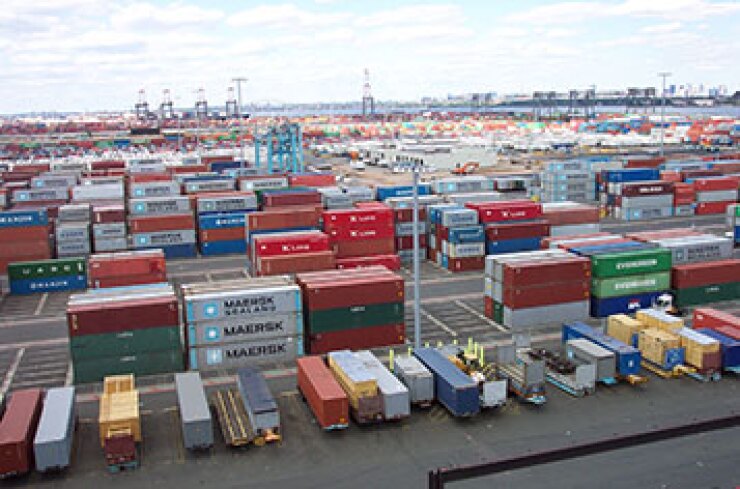
DALLAS — Increased federal funding for freight transportation infrastructure is a credit positive for U.S. ports, Moody's Investors Service said in its latest outlook for the sector.
Road and rail bottlenecks that constrain the movement of goods into and out of seaports have impeded their operations, but the latest five-year federal transportation bill provides significant increases in funding for freight-oriented projects.
The $760 million of freight-oriented FASTLANE grants awarded by the Transportation Department on July 6 will help fund 18 freight mobility projects in 16 states aimed at alleviating congestion at ports and the major land freight routes they depend on, said Moody's analyst Moses Kopmar.
The proposed grants focus on the largest gateways and most active freight corridors, Kopmar said. "Less congestion increases operating efficiency and throughput rates for ports, saves time, and reduces transport costs for shippers," he said. The competitive grants from the FASTLANE program, an acronym for Fostering Advancements in Shipping and Transportation for the Long-Term Achievement of National Efficiencies (FASTLANE), will leverage an additional $2.8 billion of local, state, and private funds, Kopmar said.
FASTLANE, which is called the Nationally Significant Freight and Highway Projects Program in the five-year Fixing America's Surface Transportation (FAST) Act, will provide an average of $900 million per year through fiscal 2020. However, only $500 million of grants over the five years can go to non-highway freight and intermodal projects.
The Transportation Department received 212 applications totaling $9.8 billion for the FASTLANE grants, more than 10 times the amount available.
The first round of FASTLANE grants includes $44 million to the Georgia Ports Authority, $42 million for the Massachusetts Port Authority, and $32 million to the Port Authority of New York and New Jersey. Other grants include $11 million to the Oregon International Port of Coos Bay and $7.7 million to the Maine Port Authority. The Port of Seattle said it would contribute $5 million of funding to the city of Seattle's $45 million FASTLANE grant for a rail project that will link port terminals to the state highway system. The FAST Act also includes a separate program that will provide states with $6.2 billion of formula grants for freight-related highway projects. States must develop a freight investment program before receiving any of the National Freight Policy grants.
The main source of dedicated federal funding for ports has been the Harbor Maintenance Trust Fund, which has mainly focused on harbor dredging, Kopmar said.
"Ports and freight land routes have been strained as the size of container ships doubled over the past two decades," he said. "Ports have responded by spending significantly to deepen waterways, upgrade terminal infrastructure and improve intermodal connectivity, all while the federal government provided little financial support."
The $4.5 billion of FASTLANE grants through 2020 will alleviate but not solve port congestion issues, the Moody's report said.
"As ship sizes continue to grow and carriers consolidate their services at fewer ports, concentrated volumes, or surges, will further challenge throughput," Kopmar said. "Although shippers choose ports based on a variety of factors, chief considerations are cost, reliability of service, and the extent to which the transit route facilitates a faster time-to-market."
At least six seaports will be direct recipients or beneficiaries of projects funded by this year's FASTLANE grants, said Kurt Nagle, president of the American Association of Port Authorities.
"Overall, America's ports represent one-third of the 18 FASTLANE grant recipients and approximately 20% of the grant dollars," Nagle said. "While of course we'd love to see all of the ports' grant application projects be funded, the fact that this many ports are receiving grants is a testament to the importance of America's seaports in our national transportation system and to the economy. We look forward to additional vital projects being funded in the future."





